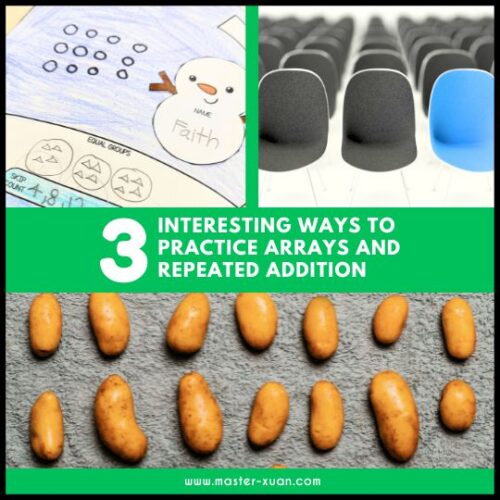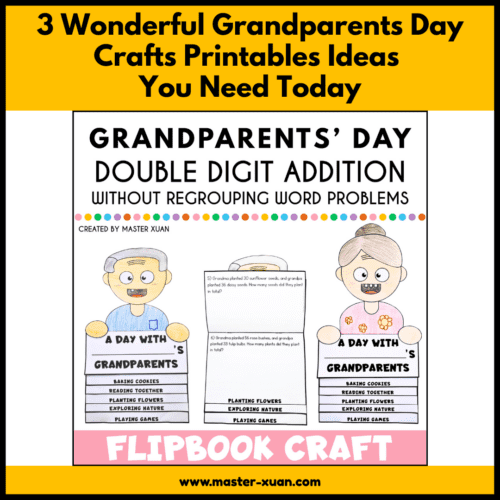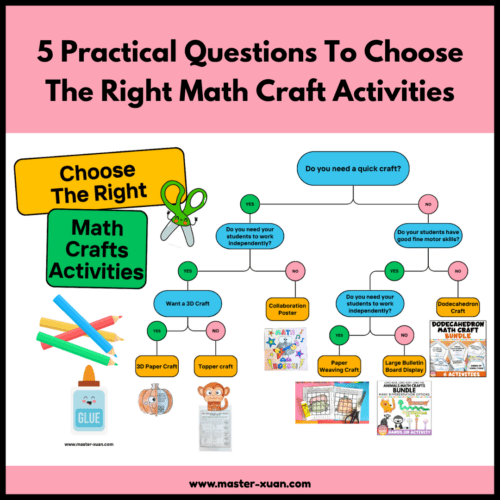Do you want to know how to help distracted students or students who can’t focus? Then this is a must read!
In practice, distractions often draw attention away from the task at hand, leading to a lack of focus. However, being unfocused can stem from various reasons beyond mere distractions.
In this article, we specifically address two related but distinct challenges: students who are easily distracted and those who find it difficult to maintain focus in the classroom.
These challenges manifest in behaviors such as an inability to stay seated, a frequent need to stand up after completing tasks, improper sitting postures, noticeable fidgeting, and a tendency to become easily distracted by other activities.
Recognizing these signs is crucial for understanding the unique hurdles these students face, impacting their learning efficiency.
This blog post will explore common attention problems, examine the underlying reasons, and provide insights on how to support both distracted students and those facing focus challenges in the long run.
Common Behaviors Noted in Distracted Children Aged 0-12 Years:
- Needs to be called multiple times before responding.
- Struggles to stay focused in class.
- Sometimes seems lost in thought or daydreaming.
- Tends to go off-topic during conversations.
- Finds it hard to sit still and often moves around.
- Easily gets distracted in group activities.
- Attracted by other things easily.
- Has difficulty concentrating on the current academic task.
- Struggles to follow instructions or complete multi-step activities, occasionally requiring repeated guidance.
- Impatient and don’t like to think.
17 Reasons Why Students Cannot Focus And How To Help Students Who Are Easily Distracted
1) Seeking sensory stimulation
Sign: These students have behavior like body swaying, throwing stuff, touching items etc.
Reason for the Problem: Their brains are telling them to find something to satisfy their senses.
Strategy: Allow them to move first before giving them tasks that require sitting still and focusing.
The ratio of moving to sitting still should be 1 : 3. For instance, dance for 10 minutes and do math worksheets for 30 minutes.
2) Avoiding stimulation
Sign: These students tend to engage in personal activities during group discussions.
Reason for the Problem: The avoidance of external stimuli may stem from an overwhelming classroom environment, often perceived as too noisy. In an attempt to cope with potential sensory overload, these students retreat into personal activities, distancing themselves from the surrounding environment.
Strategy: This type of student may need to practice their auditory focus.
Engaging in specific activities that enhance listening skills and the ability to filter out extraneous noise can be beneficial.
This may involve participating in focused listening exercises, such as paying attention to specific sounds or practicing active listening during discussions.
By honing their auditory focus, students can better navigate group settings and contribute meaningfully to discussions without feeling the need to withdraw into personal tasks.
3) Sensory dysregulation, audio-visual perception disorder
Sign: Struggling with auditory and visual perception during activities like listening or reading and thus may come across as listening inattentively or watching inattentively.
For example, they cannot fully hear what others are explaining; or in the process of writing homework for exams, they often make careless mistakes.
Reason for the Problem: This kind of distraction is a disorder of the brain’s visual and auditory perception, which often occurs in children aged 4 to 9 years old.

Strategy: Implement auditory processing and visual perception training (best done between the ages of six and nine).
For example, play memory games that involve auditory stimuli. Start with simple sequences of sounds and gradually increase complexity. Ask the student to repeat the sequence.
Or have the adult read a short sentence from the picture books and have the children recite again.
As the children grow older, the sentences can be lengthened, or even short stories. Then ask the children to practice speaking the content of the story in their own words.
Another game is to take turns to say an item without repeating.
Some examples of visual perception training can be tracing a path on a maze, memory game, sort objects by color or shape.
Spot the same series – Maths Measurement Games require students to compare the pictures to find the same pictures.
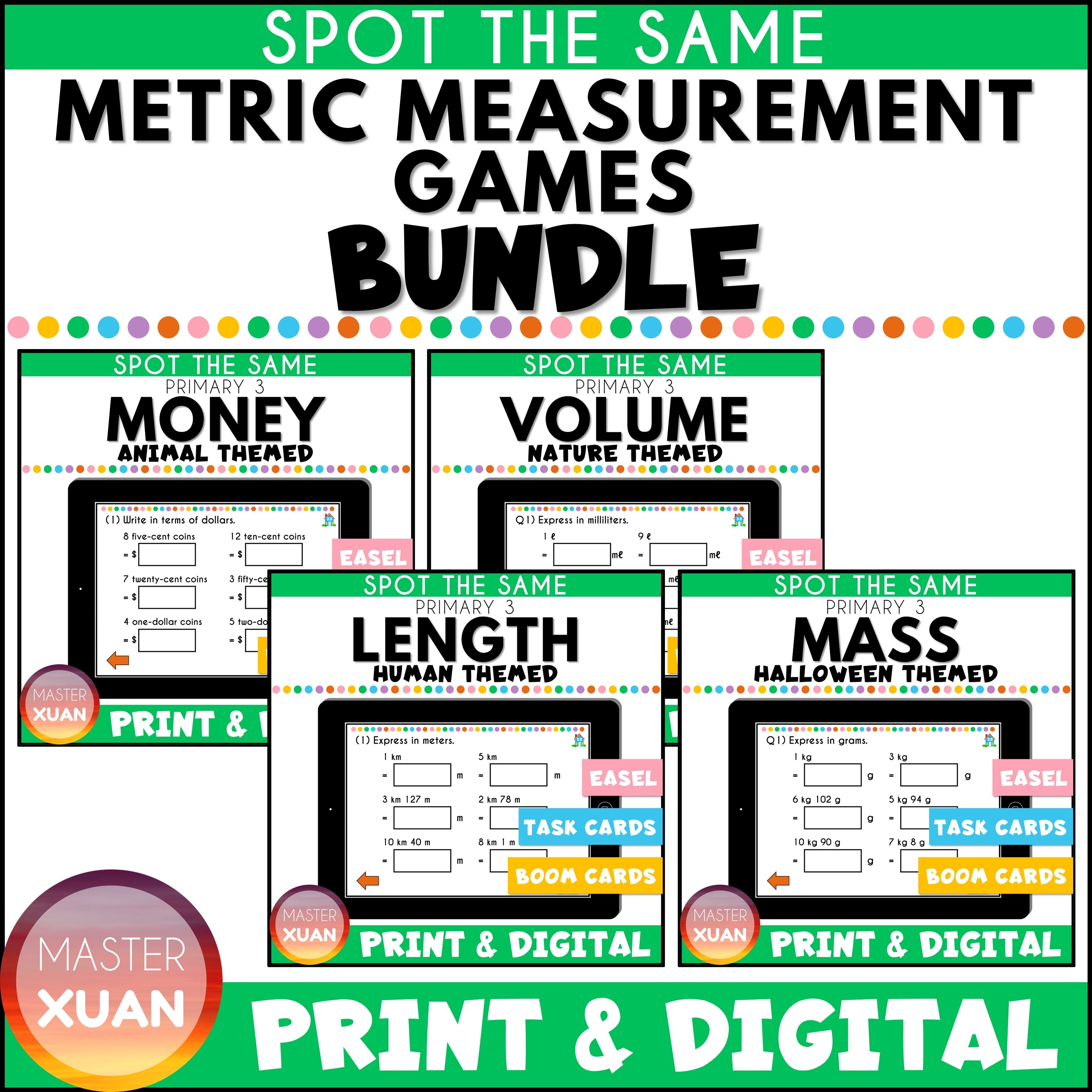
4) Have attention transfer issue
Sign: One particular sign is this type of student has no problem concentrating when they are alone, but when in a group setting, their concentration is weak. Some characteristics are they aren’t able to follow the teacher’s instructions during class or in a group setting.
For example, the teacher is already talking about the 3 steps, but the child may still be stuck on the first step.
During the lesson, perhaps the teacher wants everyone to look at the plants in this picture, but the children focus on a small insect that strayed into the picture instead of shifting their attention to what the teacher is describing.
Children of this type are attentive but may focus on different aspects than expected.
They might struggle to shift attention from one thing to another or become immersed in their own world.
So they do not pay attention to the fact that the activity goal has changed and thus are unable to follow.
Reason for the Problem: Cognitive rigidity, poor cognitive flexibility, and excessive persistence.
Simply put, cognitive flexibility is the ability to adjust our behavior to adapt to the environment. To have good cognitive flexibility, you need the assistance of brain inhibitory control and working memory.
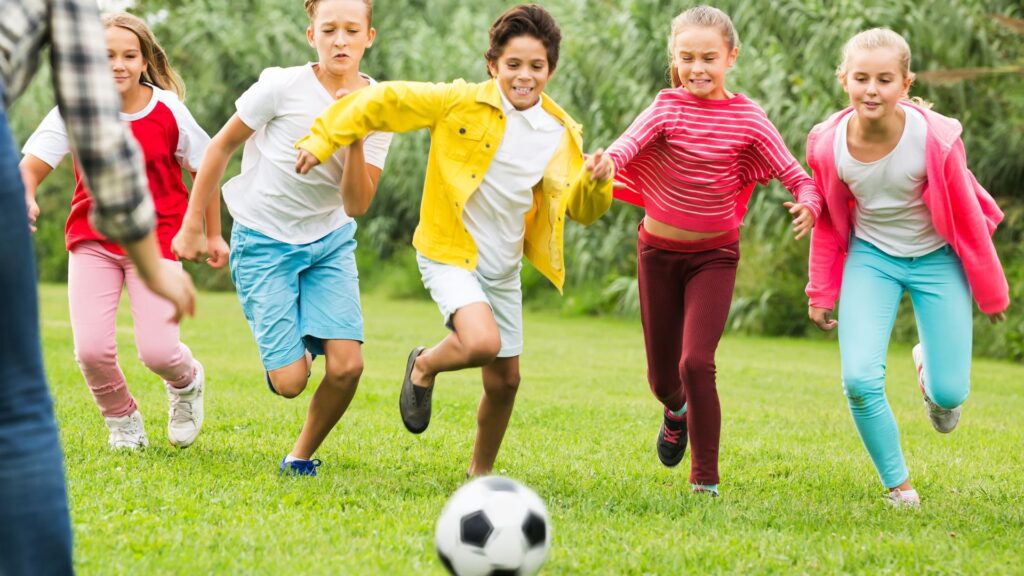
Strategy: Activities promoting cognitive flexibility, like chess and strategic board games, can be beneficial as they get to interact, discuss, listen to others, and learn to see things from different aspects.
Enhancing shared attention through ball sports and team games can also be helpful.
Note: Enhancing shared attention refers to the process of improving and strengthening the ability of individuals to focus on and engage with the same stimuli or activities, especially in social contexts. Shared attention involves multiple individuals directing their awareness toward a common point of interest or a shared goal. This concept is particularly significant in social interactions, communication, and collaborative activities.
5) Easily attracted by “external stimulation”
Sign: Some children’s attention is easily transferred to other things and cannot come back to the original task, or are easily attracted by other irrelevant things and jump away from the topic
For example, as soon as someone speaks or something happens next to them, they will immediately turn their heads to look, and then forget the task at hand.
Reason for the Problem: Students with sensory processing differences may be more sensitive to external stimuli. They might find it challenging to filter out irrelevant sensory information, making them more prone to distraction by various stimuli in their environment.
Strategy:
In scenarios whereby the student has the urge to be involved with other people or group discussion, give him a limited number of sentences he can comment on. Or restrict him to only ask questions about topics related to the study at hand to help them calm down and study.
Another way to practice them is to only respond to the right event.
For example, using a poker card, ask students to clap their hands if they see red color, even/odd number, specific shapes etc.
You can make it harder by giving different responses when they see different things.
For instance, raise their left hand if it is red + heart shape, clap if it is black + spade shape, don’t do anything if it is neither.
6) Overloading the brain

Sign: Students can’t do static work for a relatively long period of time.
Reason for the Problem: The “capacity” that executive concentration can handle at one time is limited and varies from person to person. This is why some people can handle many things at the same time, but some people even when you are just explaining 1-2 things, they will still miss things out due to distraction.
Strategy:
It is common to tell students the benefit of finishing their work. For example, “only after you finish your homework, then you can have a break.”
This might work for some students but may not work for some. Afterall, no strategy is a fit for all types.
For students who can’t work with this strategy, you may need to give them brain breaks. Because they tend to overload their brain easily and thus result in some negative behaviors.
Overall, we need to look at each student and tweak the strategy based on each case.

7) Low deep sleep quantity
Sign: Poor temper, and poor concentration.
Reason for the Problem: Many children have poor sleep quality and have problems alternating between deep and light sleep periods, which can lead to insufficient sleep.
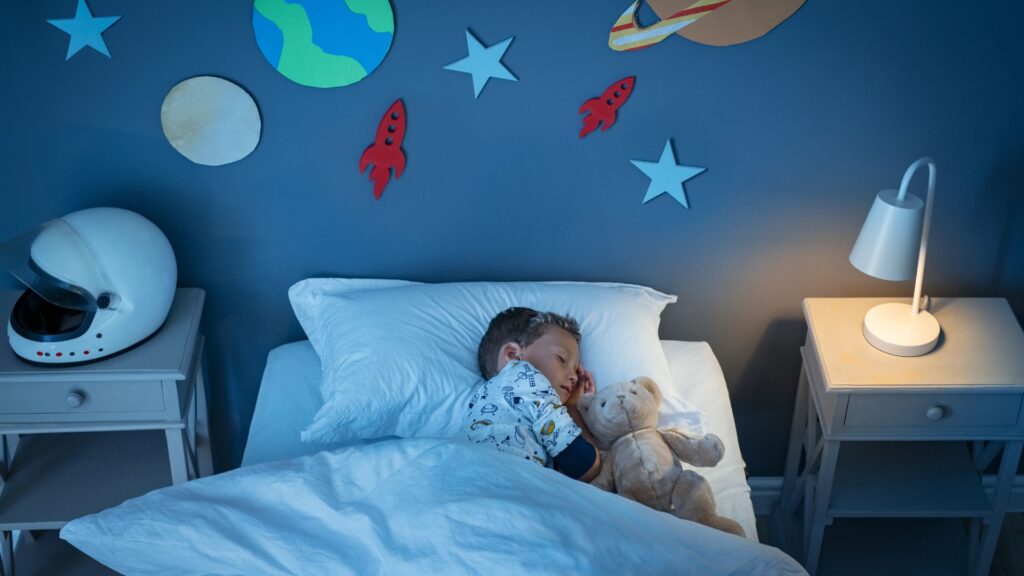
Strategy:
Have a fixed sleep ritual before going to bed, avoid blue light stimulation, reduce stress before going to bed, and increase the amount of sunlight during the day to increase the quality of deep sleep.
8) Physiology: Insufficient core muscle strength

Sign: Sometimes when we see students leaning on the wall, braising their head with their hand, lying down on their table, or habitually holding his chin, we think they are showing a bad learning attitude.
Reason for the Problem: However, it could simply be because the child has “insufficient core muscle strength” and cannot maintain a posture.
If students feel tired while sitting, they will move around and be unable to concentrate.
Other than core muscle, lack of hand muscle strength can also lead to no motivation to write.
Strategy:

These physical issues can only be solved through doing some strengthened muscle endurance training. For example, twisting of bottle caps, juggling, archery etc.
9) Issue with eye tracking
Reason for the Problem: If a child is exposed to a fast-beating screen for a long time, not only will the small muscles of the eyeballs become easily fatigued, but the ability of visual tracking will also be weakened.
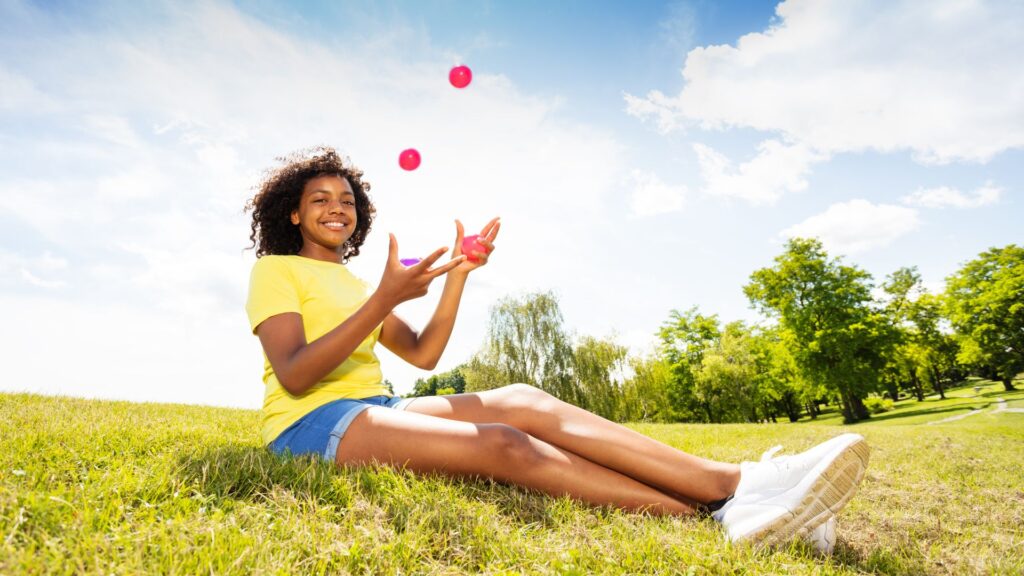
Strategy: Reading and reading aloud can improve children’s eye tracking ability, and juggling can also help children develop visual fluency.
10) Poor brain alertness and slow reaction speed
Sign: Children of this type appear less energetic, tired, and slow in movement.
They may seem introverted, quiet in groups, and give off an overall sense of being in a daze during class.
They are often caught staring in space, aka in a daze.
Reason for the Problem: Lower-than-average blood circulation in the brain may result in reduced brain alertness.
If the activity is stimulated enough, the child’s brain can operate smoothly.
If the stimulation is not enough, the brain will be in a drowsy state, and it will be difficult to concentrate on doing things.
In addition, it may also cause work efficiency to decrease and the overall response speed to slow down.

Strategy:
To improve focus, it’s crucial to regulate brain alertness, enhance muscle tone, and increase physical fitness.
Munching on a handful of nuts such as walnuts (hard objects) may be beneficial.
Establishing exercise habits of at least 30 minutes of moderate-to-high-intensity aerobic exercise every day is a must. Daily aerobic exercise, such as walking, cycling, and dancing, can significantly contribute to improving brain function and overall concentration.
Games that increase alertness include ghost catching, eagle catching chicken, dodgeball, squash, jumping and burpees, etc., can increase the number of neurotransmitters in children’s brains. It can also increase the conduction between neurons, so that they can concentrate on doing things more continuously.
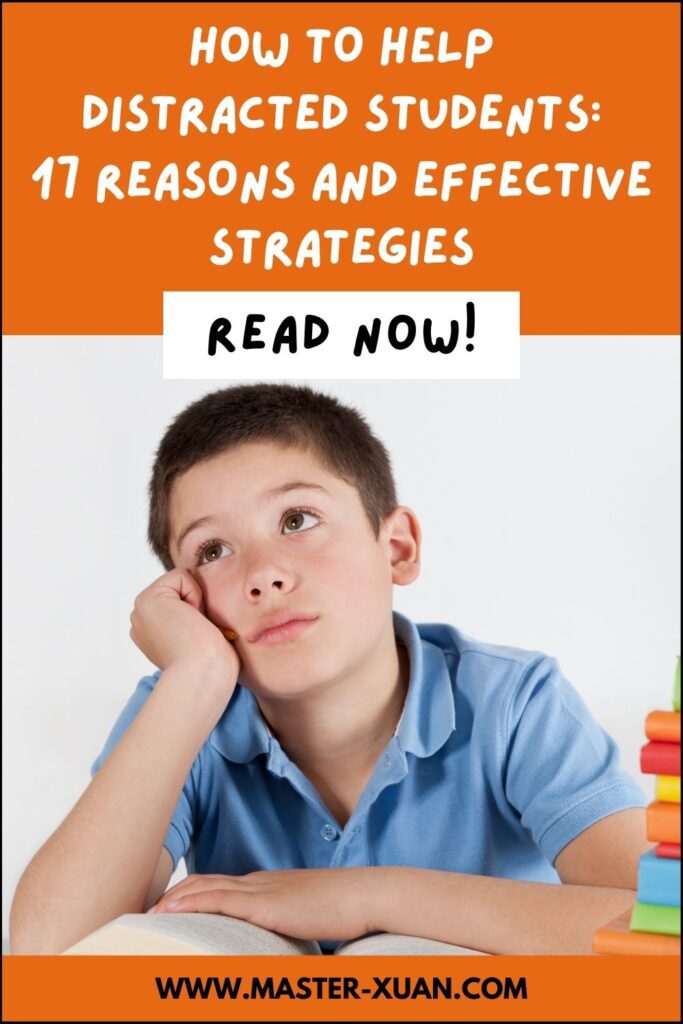
11) Imbalance of brain/body activity, impulse control problems
Sign: Observing children of this type reveals they are active, restless, and impulsive, displaying endless energy.
They find it challenging to sit still, often fidgeting, and have difficulty waiting their turn.
Their tendency to talk a lot and interrupt makes it hard for them to focus and listen attentively.
Reason for the Problem: This behavior may result from weak impulse suppression, insufficient vestibular and tactile stimulation, and proprioceptive imbalance, causing them to seek these nutrients for their brains when they should calm down, causing problems such as being unable to concentrate on doing things.
Vestibular stimulation refers to the activation and engagement of the vestibular system, a sensory system that contributes to the body’s sense of balance, spatial orientation, and coordination.
Strategy: Activities that enhance impulse control and integrate vestibular proprioceptive touch (VPT) can help regulate the body and brain to be quiet and improve concentration.
This type of child needs to be guided to slow down, not to rush to answer, but to make sure that he has finished reading the questions before taking the next step. If you just scold him for being distracted without teaching him to analyze and strategize, it will not be helpful.
The critical period for training impulse control is from 5 to 10 years old. After 11 or 12 years old, it enters the mature stage.
Impulse control activities:
Example: 123 wooden man, what’s the time mr wolf, ball games. Or play a game where they can’t move for a specific period of time, and gradually prolong the time period.
Vestibular Balance Activities:
Example: Swinging on a swing, spinning in a chair, or engaging in activities that involve changes in head position and movement. These activities stimulate the vestibular system, which is responsible for balance and spatial orientation.
Tactile Activities:
Example: Exploring different textures with hands, such as feeling various fabrics, playing with sand or clay, or engaging in activities that involve touch. Tactile activities help in sensory processing and can have a calming effect.
Proprioceptive Activities:
Example: Heavy lifting, pushing or pulling heavy objects, or activities that provide deep pressure to the muscles and joints. Proprioceptive activities contribute to body awareness and can have a grounding effect on individuals.
12) Emotionally disorganized
Sign:Their ability to concentrate is tied to their emotional state, and they can become irritable easily.
They will want to engage in challenging behavior or rebel. For example deliberately disobey the instruction given by an adult.
Or they have poor frustration tolerance. Once he encounters a setback, he will get stuck in his emotions and his behavior serves as a distraction.
Reason for the Problem: Poor emotional regulation.

Strategy: Emotional regulation training and improving mental interpretation abilities are necessary. Children must learn to interpret intentions accurately, be aware of their emotions, and understand the consequences of their emotion-led consequences.
They need to practice ways to calm down such as deep breathing and practice impulse control through activities like Simon Says and Freeze Dance, to develop self-control.
13) No intrinsic motivation
Strategy:
You need to give them short-term achievable goals.
For example, if they can only focus and do 3 word problems before they give in to the urge to move, set the goal of doing 4 word problems instead of 8!
Praise them after they attain their goals so that they have a sense of achievement.
14) Withdrawn and give up on learning
Sign: This type of child can be very attentive to things they enjoy but easily distracted by tasks they find challenging. They can also show signs of being anxious, not confident and no motivation to study.
Reason for the Problem: Lack of self-confidence and a fear of failure contribute to this distraction.
Strategy:
Exercise is a good way to increase positive emotions, because exercise can inhibit the activation of the amygdala in the brain, prevent the emergence of negative emotions, and promote the secretion of dopamine and serotonin.
Dopamine can promote positive emotions and make people happy, and serotonin can fight depression, so it is necessary to develop a good habit of daily exercise.
The next step is to increase the child’s sense of achievement. You can gradually adjust the difficulty level through reward systems and dismantling activities.
The most important thing is to clearly communicate with the child the expectations of adults. Adults should let the child know that you will accompany him.
Adults should also avoid excessive blaming, so that children feel supported and their self-confidence can be improved.
Another way is to use their interest to guide them to do something that they are not interested in. For example, if a child likes toy cars, you can use toy cars as manipulatives to teach them math facts.
15) Too many inner disruptions
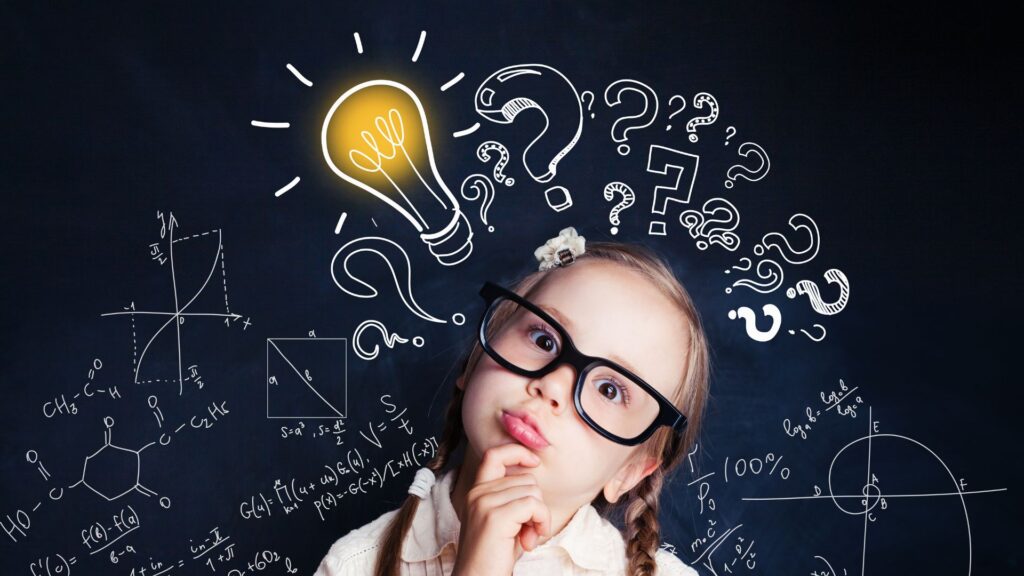
Reason for the Problem: They are thinking of the events that they are looking forward to after the learning period. For example, students may be thinking about meeting their friends after lessons and all the details about it.
Strategy:
Avoid putting emphasis or encouragement on speeding up their focus and study efforts. For students with such problems, it will make things worse.
Instead, pull back their attention to the task on hand.
“After you study, it’s your free time. Now it’s time to do math, what are the things that we need to do?”
Expected response is: “Now is time to do math, I need to read the question, use the formula correctly, write the steps neatly, write the answer and remember to check my work.”
However, do note that students wouldn’t know the exact process that is expected from them. Practice with them or write down the step-by-step instructions.
16) Too many outer disruptions
Sign: Have to be involved with other events not related to the task on hand.
For example, interjecting in other people’s conversations with random stuff.
Reason for the Problem: Usually this can be environmental, events or people that act as distractions.
For example, while the student is studying, there are other classmates right beside making noise and playing. What’s worse is, the student is studying and playing at the same time!
If it becomes a habit, students may get used to studying in a distracted mode.
Strategy: There is a need to compartmentalize the learning zone.
17) Not in the right state of learning
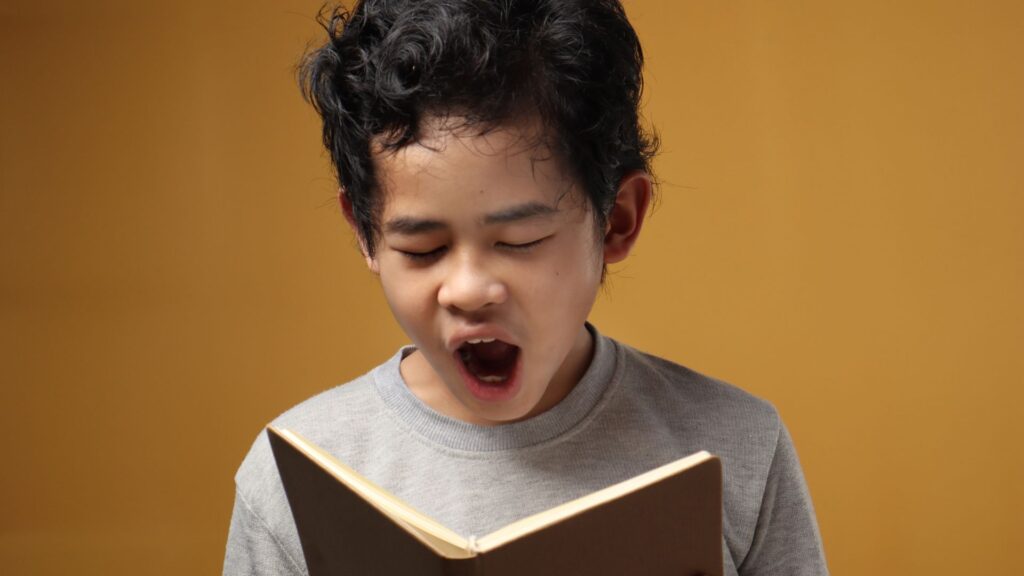
Sign: Eyes seem to glaze over or unable to take in more information.
Reason for the Problem: Studying when the brain or body is tired.
Strategy: Students might not realize they’re learning less efficiently, so adults can help them notice.
Encourage them to move around, bite or eat something crunchy, or do unrelated activities.
Gradually, help them learn to recognize when to stop studying when their learning efficiency is low.

Final Thoughts
The content above highlights the issue and suggests corresponding strategies. Now, let me summarize the 17 effective and practical ways on how to help distracted students as a teacher.
- Allow movement before tasks requiring focus, maintain a 1:3 ratio of movement to sitting.
- Activity: Run for 10 minutes before starting math worksheets for 30 minutes.
- Practice auditory focus enhancement activity.
- Activity: Reciting simple sound sequences.
- Implement auditory and visual perception training.
- Activity: Read a short sentence from a picture book and have the child recite it in their own words.
- Promote cognitive flexibility.
- Activity: Play team games.
- Limit responses, practice selective attention games.
- Activity: Use a poker card to prompt responses based on specific criteria, like color or shape.
- Provide brain breaks, tailor strategies to individual needs.
- Activity: Introduce short breaks during tasks, letting them read a book.
- Inform parents about the need to establish a fixed sleep ritual, reduce stress, and increase sunlight exposure.
- Activity: Encourage outdoor activities during the day.
- Strengthen core muscles through exercises.
- Activity: Engage in muscle endurance training with activities like archery.
- Improve eye tracking.
- Activity: Practice reading aloud and engage in juggling exercises.
- Regulate brain alertness through aerobic exercise and alertness games.
- Activity: Incorporate daily aerobic exercises like walking, cycling, or dancing.
- Do vestibular balance, and tactile, proprioceptive activities.
- Activity: Using manipulatives, play tug of war, go on Sensory Obstacle Course Adventure or Nature Sensory Trail.
- Activities promoting impulse control.
- Activity: Play games like “123 wooden man,” or “What’s the time Mr. Wolf”.
- Do emotional regulation training
- Activity: Practice deep breathing.
- Set short-term achievable goals, offer praise for accomplishments.
- Activity: Break tasks into smaller, achievable goals, praise achievements, and gradually increase difficulty.
- Avoid emphasizing speed, redirect attention to the task on hand.
- Activity: Give students step-by-step instructions for the current task and make them vocalize them.
- Compartmentalize the learning zone.
- Activity: Establish a designated space for learning to minimize external distractions.
- Recognize low learning efficiency.
- Activity: encourage movement and brain breaks.
When children have distraction problems, they can practice through the above suggested activities.
However, if the child’s distraction problems seriously affect the child’s participation and performance in school activities, it is still recommended that parents go to the nearest medical institution for evaluation.
Hopefully it can help distracted students. learn more smoothly in school.
Related Read: The Top 3 Strategies For Teaching Math In Small Groups Or Classes
References:


